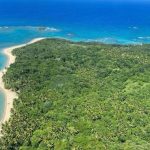Global Marine finds 16th Century shipwrecks off Florida

Cape Canaveral, Fla.-“During the Dig and Identify phase of our operations this season we havepositively identified four different potential sites, all of which date to the16th and 17th centuries and appear to be either scatter or the remains ofcolonial era shipwrecks” said GME CEO Robert (Bobby) Pritchett on Wednesday.
Working under permitsissued by the Florida Division of Historical Resources, the Army Corp ofEngineers and the Environmental Protection Agency, GME completed magnetometersurveys and minimally intrusive excavations to reveal that each of the sitescontain cannon(of several different types), cannonballs, and ballast stones, eachsite also has 2 more large iron anchors. All the iron objects are heavily encrusted and buried under largeamounts of sand and mud. Further investigations into these sites are currentlybeing planned.
Several of theobjects have fishing nets entangled on them as well as barnacles which lead usto believe that the area is very dynamic and during storms the sand moves,leaving the objects completely exposed. This is one of the reasons we believe these objects need to be rescued,conserved, and put on public display in local museums where they can be seen,studied and displayed.
“We have enjoyed anexcellent relationship with the State Of Florida, they have been open toworking with us, and have been receptive of our methods and ideas. Working with James Sinclair, MA, GlobalMarine’s archaeologist – Florida Bureau of Archaeology representatives andGlobal will develop a plan for the investigation and possible recovery of someof these exciting finds. This clearlydemonstrates that state archaeologists can work with professional privatelyfunded companies to rescue artifacts and objects before they are completely destroyedby the perils of the sea” said Pritchett.
“We are very excitedby these finds and believe further study will help us identify the origin ofthese historical and significant objects. GME has done extensive research on several shipwrecks which we believewere lost in the area in the 16th and 17th century. One possibility is that two of the sitescould be related to the lost 1565 French Fleet of Jean Ribault which somesources believed to have been lost further north.
Several unsuccessfulexpeditions both by private companies and tax-payer funded organizations havebeen mounted in the past, but nothing has been found. The importanceof finding part of this fleetwould be significant” said- Jim Sinclair.
“We have always believed that finding one ormore of these important historic wrecks on the sand bars of Cape Canaveral wasa possibility based on research we have done and the discovery of a salvagecamp in the area by Doug Armstrong in the 70’s.
Our success in pastprojects in the Dominican Republic and our Cape Canaveral project clearlydemonstrates that our methods are sound. We have successfully discovered, mapped and worked dozens of shipwrecksin the Dominican Republic and have identified and documented more than 600objects at the Cape during the last two seasons.
One such discoverycould be one of the first rockets deployed from NASA/USAF in1949. GME haspioneered new methods which have greatly streamlined the process of magneticanomaly identification and recording” said Pritchett
"The find isexciting, but not unexpected," says GME COO William Seliger “We have doneour research and we know that a large number of colonial vessels were lostalong the Florida coast during violent storms, especially on the dangerous sandshoals at the Cape; considering the amount of area we have explored, it wasonly a matter of time”.
Seliger also said“Not much work has been done in the area because it was off-limits to boats foryears while the space program was active and because of the difficulties ofworking in zero visibility water”. To safeguard these archeological sites frommolestation or looting, the specific locations of discovered shipwrecks and/orartifacts will not be disclosed via media or other means. According to GME’slegal counsel, Barry Chapman, “under Florida law, GME will be entitled to 80%of all artifacts recovered in state waters from non-military ships. If a shipis identified as a military vessel, then negotiations with that specificcountry will be undertaken.”
*Sketches may not be100 percent accurate as all artifacts were heavily encrusted and none of theencrustation was removed by GME archeologists.

















